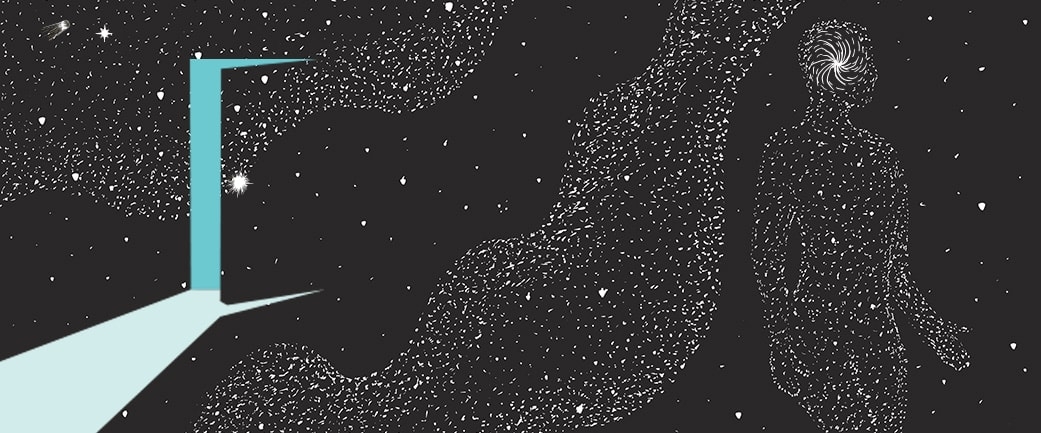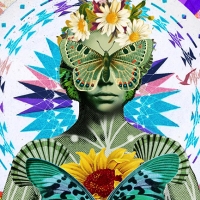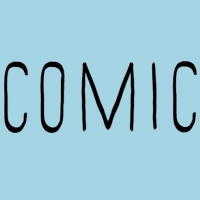
Father Guidalberto Bormolini has devoted his life to supporting those seeking knowledge about conscious dying—and living—whether for themselves or in service of others. Well-versed in both Western and Eastern traditions, his Everything Is Life institute in Prato, Italy, is a vibrant center of healing and instruction.
This interview was conducted in Italian and translated to English. It has been edited for length and, where needed, for clarity.
Jon Pepper and Patrizia De Libero: What is conscious dying and how can being present in the moment of death be a form of healing?
Father Guidalberto Bormolini: Death is considered by many philosophical doctrines to be a source of healing. Because according to many philosophies, including Christianity, life can be seen as a prison. It is like an exile—being far away from the motherland. So death is considered the supreme liberation. Saint Carlo Borromeo asked an artist to draw a gold key in a painting, where the grim reaper was represented. The painter was surprised and asked why—isn’t the reaper death? The saint answered, yes, but death is the key that opens the door of life.
Dying consciously is a way of healing, but dying unconsciously is not. If we remember the healer during life or especially at our last breath, then death can be the meeting with the supreme healer—the divine therapist, as it were.

Can the practice of conscious dying help us in day-to-day life?
Having death in front of us generates many precious gifts, but I would summarize them in two ways. The first is carpe diem—if I know that I will die, then life becomes precious. Therefore I live it fully and in depth until the very end.
The other is that by contemplating death I become aware that the invisible is more important than the visible. The meeting with the spirit, with the divine, becomes relevant here and now, in this world. While I know that my life is moving toward death, my life from now on must also be filled with what is important after death, which is the invisible world, the spirit. If I immerse myself in the spirit, it is more likely that I will live a life “of the spirit” to the point that it might be possible to meet god in this life. So by contemplating death I can anticipate this meeting, because it is truly what matters most.
How could this practice help in repairing the past? For instance, by helping our ancestors who came before us?
In Christian mysticism we say we belong to one unique mystic body. Many traditions all over the world say we are all interconnected—a microcosmos united with the macrocosmos. Therefore there is clearly a need of being liberated for many, if not for everybody. In the Christian tradition the liberator is Jesus Christ, who with his death and resurrection liberated the dead.
In our small world, in my opinion, we can do the same. Our own personal liberation can also be the liberation of many. This is the gift we can give. Salvation is not something that is individual. It is always something that is communal. I heal myself because in this way I also heal others. Individual healing is the way to heal the community.
Is there a practice that can help a loved one as they die? Something that offers healing as they move from this world to whatever comes next?
There are many things that can be done on the human plane. They are mainly listening, being present, nourishing with love, and reassuring the person. But the most precious of all is being able to help this soul orient toward a great aim after death.
If we can help a person begin to visualize the world in which he or she will reside after death, then they will recognize this place after death. Because even the Tibetans say the greatest risk after death is not being able to recognize the divine light, the vital light that is coming toward us after death. The habit of being anchored toward possessions, material goods, and so on makes our encounter with the invisible world unfamiliar. For this reason, we might not only miss the opportunity to recognize the divine light, but also end up traveling disoriented into this new life.
We are speaking about practice, preparation, and healing now, before we die. What about the idea of healing after death?
There are many different approaches in the spiritual paths to this fundamental question. Because the anguish of death is based on two main pillars: first, death as an annulment, and second, death as a guillotine—an absolute end.
Once I “go over”—however it went—it is over. This is unbearable for human beings, and therefore since ancient times there have been different perspectives on death. One is that death is not the conclusion or annulment, but rather a passage to a true life, maybe a life fuller than this life.
Another idea is the possibility of progression, evolution, and healing after death. Eastern religions have answered this enigma through the theory of transmigration of souls, or reincarnation, according to which I am given a new life after death.
Do you see a difference between healing and curing?
Sometimes in the physical plane there are illnesses you can’t heal—cancers or diseases that deteriorate one progressively. Here we can’t heal the body. But we can still cure the inner person. The impossibility of a physical healing can bring a greater possibility of a psychological and spiritual curing, because the sickness that devours the body obliges us to ponder deeply.
Do I want to correspond with the dying body? Or do I want to totally heal myself, which means to set myself free from this sick body? Because if I identify only with the body, the sickness will devour me and everything that I am completely. But if for me the body is like a suit of clothing that has served its purpose, then I can let it go and wear a new body of light.

What is the role of meditation in healing?
The supreme healing resides in meditation—in the prayer of the heart. Why? Because according to some cosmological myths, the universe has been created from music, from a sound. So when we practice our own prayer of the heart, our mantra or invocation has more power if it is sung, not as a melody but rather in the attitude of the recitation. A dry or mechanical recitation of the prayer can concentrate the mind, but that is not enough. It must be a song of love that unites with the song of the whole universe.
The leaves, the flowers, the rivers, the stars, the dawn, the sunset—everything sings. The oak trees, the animals, the wind—everything that exists sings a secret song. If we sing our own song of the heart, we become part of this symphony.
In the Bible it is said that after the departure from Eden, suffering and pain were created. Meditating with the prayer of the heart can heal this suffering to reunite us with the original sound. In order to heal we need to find Eden, but Eden is not a mythological place. It is a concrete place. The Bible describes it as a place with four rivers. This place with four rivers is within us; the heart is the place where four rivers flow.
The divine heart is the only one that can give life unceasingly. There is life and healing when we receive love from the divine—from the cosmos, from the people around us, from the air that we breathe, which is permeated with divine love. Once we receive all this love in this way, we can give it back. If we are part of this dynamic, we will heal completely once and for all.
About the Contributors
Father Guidalberto Bormolini began as a violin maker, but soon after receiving his diploma he met Father Gianvittorio Cappelletto, who introduced him to deep meditation. This set him on a path to study philosophy and theology and eventually become a consecrated priest. He founded and directs Tutto è Vita (Everything Is Life) in Prato, Italy, a center that offers palliative care and teaches end-of-life providers.
Jon Pepper is a former musician, book designer, and entrepreneur who has almost fifty years of experience with meditation and spiritual pursuit. He is currently a trustee of the Gurdjieff Foundation of New York.
Patrizia De Libero is a native of Rome, Italy, who has studied many spiritual traditions and embraced the Gurdjieff Work since her college days. She runs Kairos Pilgrimages, an organization connecting people to sacred places. Patrizia is a yoga teacher and certified death doula, and she runs the Everything Is Life school of conscious dying and living in North America.






I highly suggest the written works of Stephen Levine, who worked with Dr. Elizabeth Kubler Ross, and later with Ram Dass. He wrote Who Dies, and A Year to Live. He considered himself a “deathist”.
Spring of my 83 year is coming, my 50+ years of the Gurdjieff work, Tai chi and an active full life have brought me up to some kind of limit of understanding. It has become clear that all my practices, studies, ways of living and thinking have
reached some kind of limit. A growing feeling there is a Universal awareness of consciousness I am emersed in that is animating me and the world around me that I’ve been skirting the edges of but so rarely touching or being touched, and I am questioning all my practces, ways ans o on as they do not seem to be a help any more but part of the barrier between m ordinary man and something unnamable but very omnipresent. I read the essay above and it resonates in me. I look forward to whatever you have to offer in this unnamable “territory”. Thanks, Chuck ub ìn Prarostino (TO) Italy